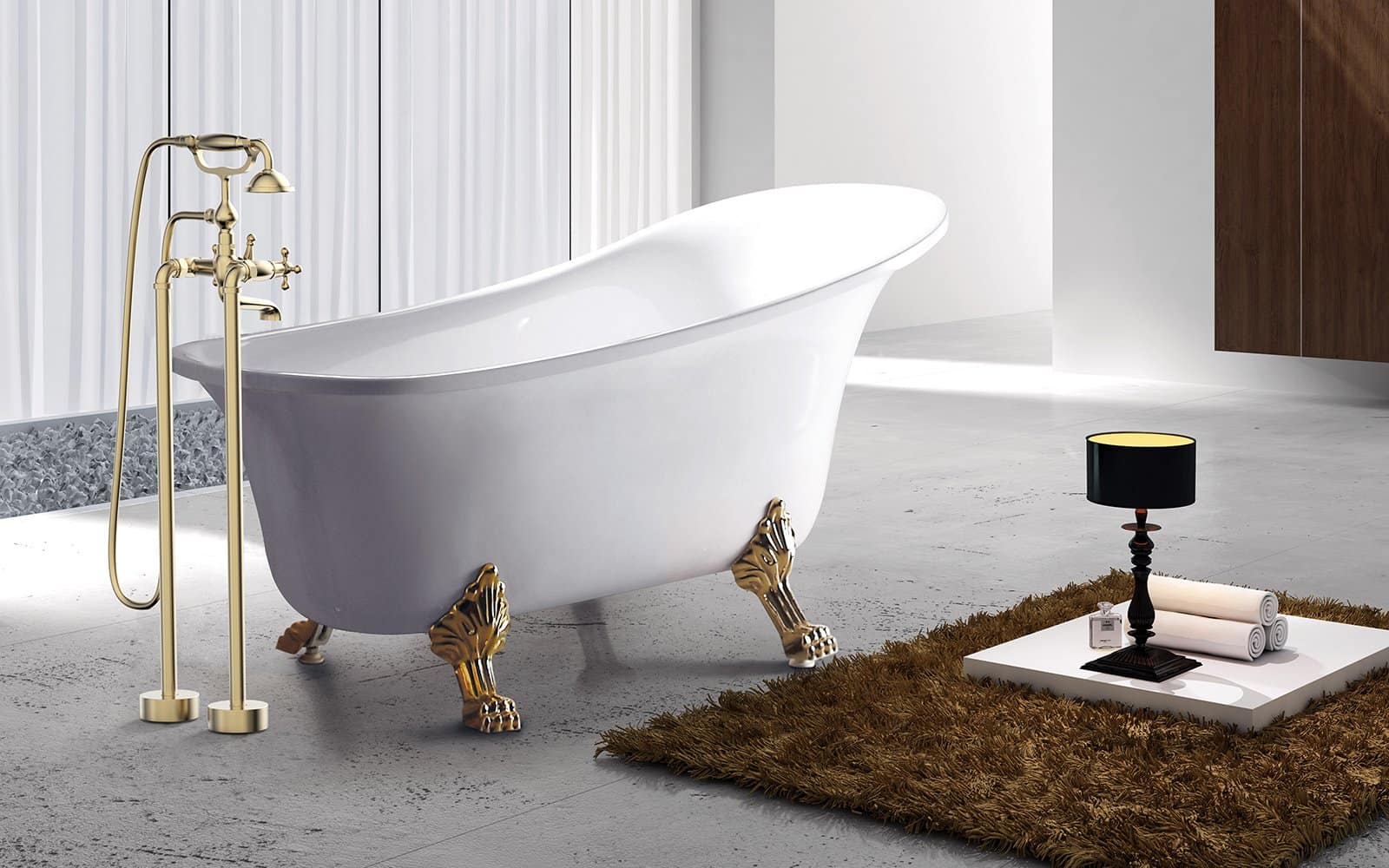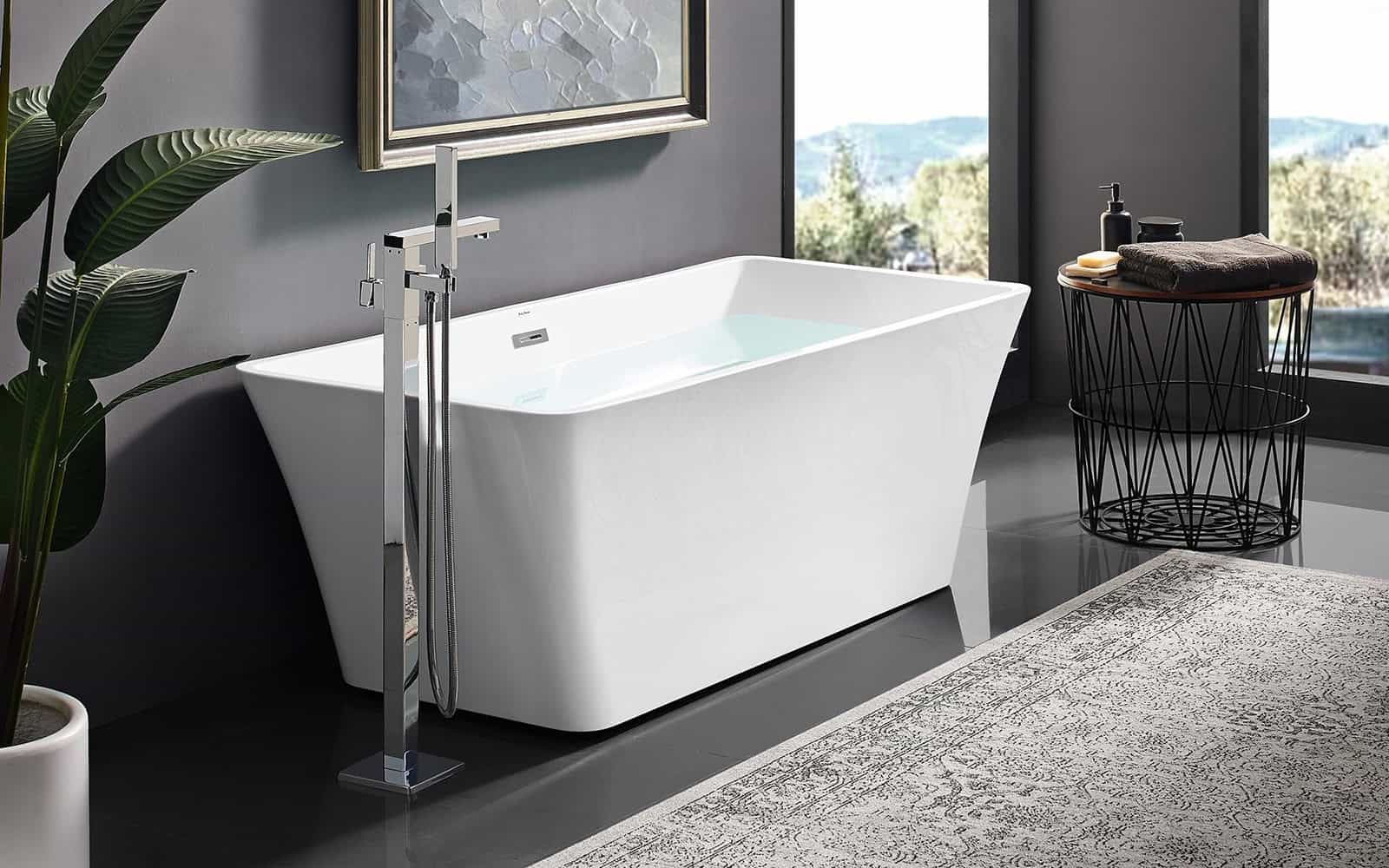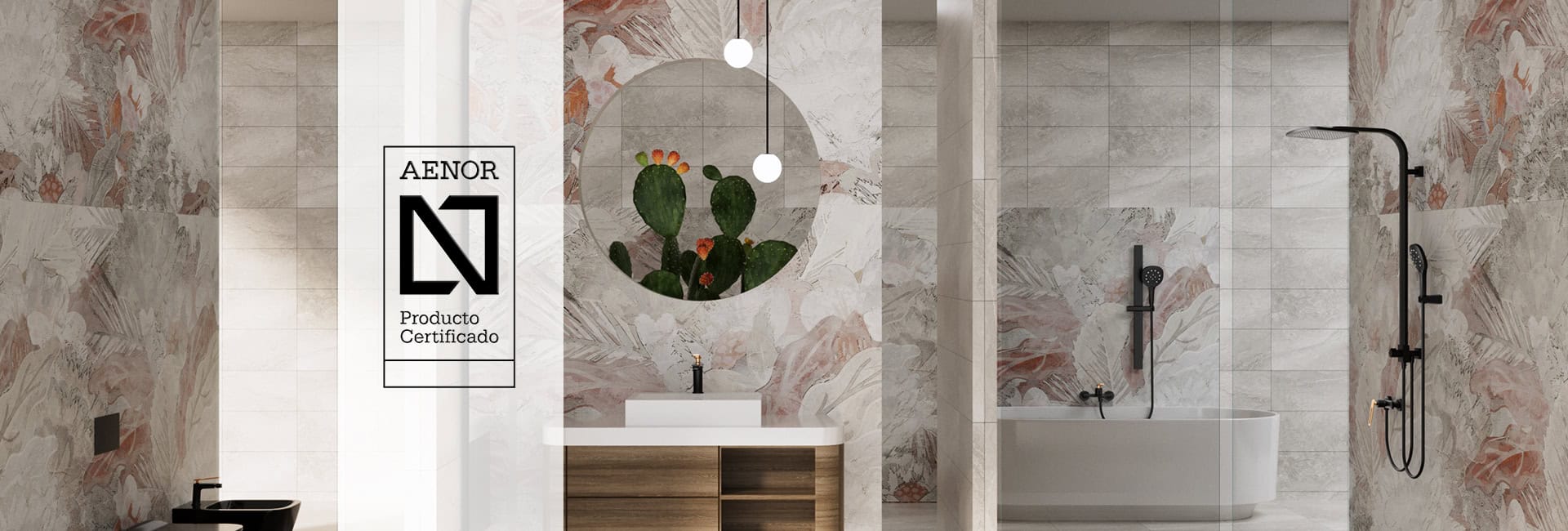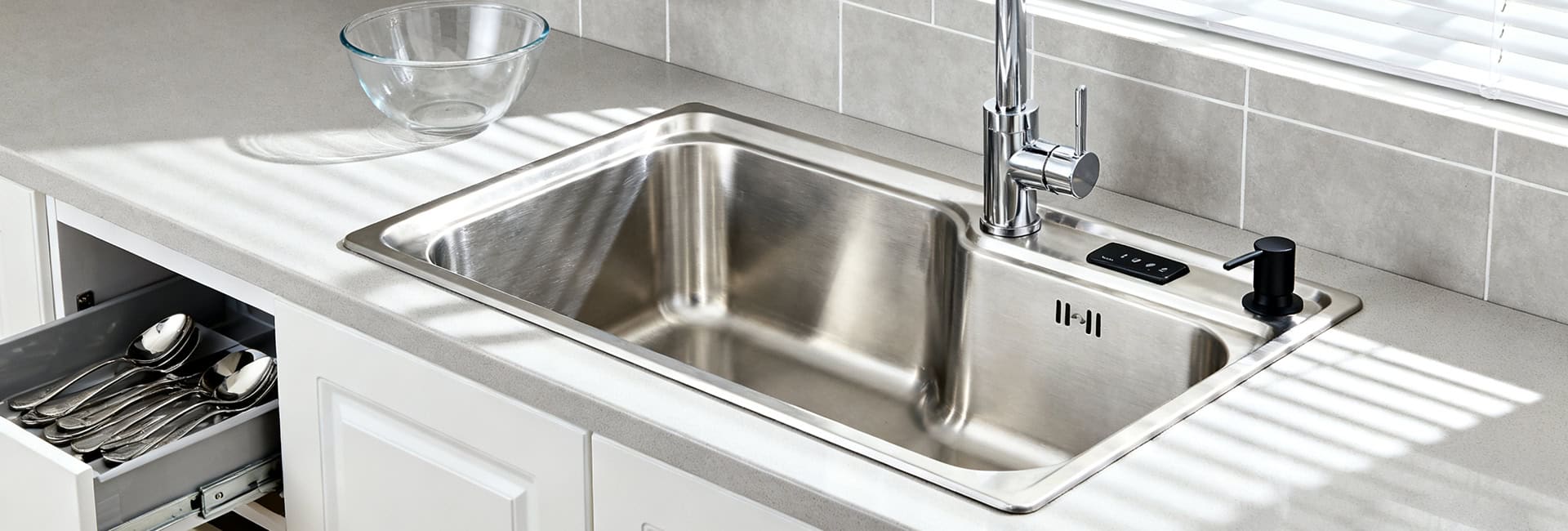A perfect bath offers more than cleanliness—it’s a moment of calm and comfort. To turn your bathroom into a true retreat, understanding bathtub dimensions is key. Among them, soaking depth stands out. Often overlooked, it’s what makes a bath deeply relaxing.
In this guide, I’ll explain what soaking depth is, how to measure it, and why it matters. We’ll explore different depths, and cover other essential dimensions. You’ll also get tips to choose the right tub for your space and needs.
What Exactly is Bathtub Soaking Depth?
Soaking depth is the true measure of how much water a bathtub holds for full-body immersion. It refers to the vertical space inside the tub basin, not the overall exterior height—a common source of confusion.
A tub may look tall, but its actual soaking depth depends on the basin’s design and, most importantly, the position of the overflow drain. A low overflow drain reduces the water level, limiting how much of your body can be submerged.
The overflow drain is both a safety feature and a design limitation. It prevents flooding by letting excess water escape once it reaches a set level.
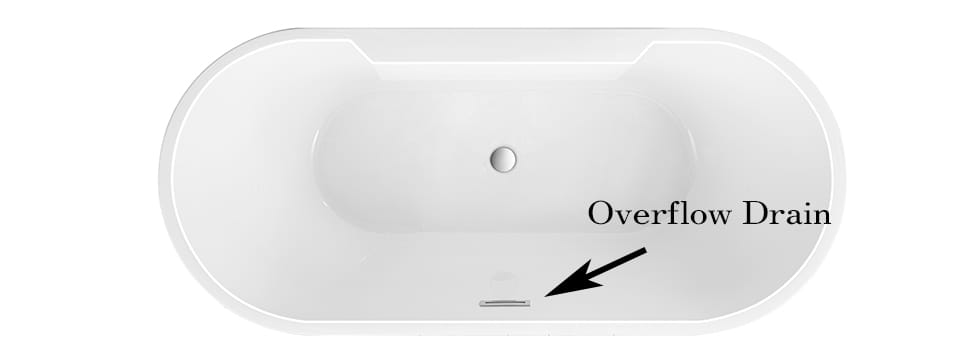
How to Accurately Measure Soaking Depth in Your Bathtub
Measuring soaking depth» is actually quite simple. I recommend you:
- Locate the overflow drain: This is typically a small opening or cover located on the inside wall of the tub, just below the rim.
- Measure from the basin floor: Use a tape measure to get the distance from the very bottom of the tub’s interior (where your feet would rest) straight up to the bottom edge of the overflow drain opening.
This measurement gives you the true maximum water level you can achieve for your soak.
Distinguishing Soaking Depth vs. Overall Tub Height vs. Basin Depth
Sometimes, people confuse “soaking depth” with other measurements. Let me clarify:
- Soaking Depth: As I just explained, this is the maximum water level to the overflow drain. This is the critical measurement for immersion.
- Overall Tub Height: This is the total external height of the tub from the floor to the top of its rim. A tall tub doesn’t automatically mean a deep soak if the overflow drain is set low.
- Basin Depth: This is the interior depth of the tub from the basin floor to the very top edge of the tub’s rim. This measurement doesn’t account for the overflow drain, so it’s not truly indicative of how deep you can fill the water.
Exploring Bathtub Soaking Depths by Type
As I’ve analyzed the market, I’ve seen that different types of bathtubs offer varying soaking depths. Understanding these differences is key to making the right choice for your bathing preferences. Here’s a breakdown in an easy-to-read table:
| Bathtub Type | Typical Soaking Depth (to overflow) | Key Characteristics & Notes |
|---|---|---|
| Standard Tubs | 10–14 inches (25–35 cm) | Common in tub/shower combos. Practical but usually not deep enough for full shoulder immersion. |
| Soaking Tubs | 14–20 inches (35–50 cm) | Taller design allows deeper soaking. Often freestanding or drop-in. |
| Deep Soaking Tubs | 20–24 inches (50–60 cm) | Deeper soak reaching chest or shoulders. Great for relaxation. |
| Japanese Soaking Tubs | 24–32+ inches (60–80+ cm) | Short, deep, with seats. Designed for upright soaking. |
| Freestanding Tubs | 14–25+ inches (35–63+ cm) | Depth varies by style. Many are deeper than standard built-ins. |
| Alcove Tubs | 10–15 inches (25–38 cm) | Built into a 3-wall enclosure. Some newer models offer deeper soaking. |
| Drop-in Tubs | 14–20 inches (35–50 cm) | Installed in a custom frame or deck. Depth depends on design. |
| Walk-in Tubs | 20–40+ inches (50–100+ cm) | Designed for easy entry and deep seated soaking. |
Beyond Depth: Other Key Bathtub Dimensions
While soaking depth is key for immersion, other dimensions like length and width also affect comfort, style, and installation. A deep tub alone won’t ensure a relaxing soak if it’s too short to stretch out or too narrow to sit comfortably. All three dimensions must work together to create the ideal bathing experience.
Length, Width, and Height Explained
- Length: Measured end to end, most tubs range from 60–72 inches. Compact models start at 48 inches, while larger ones can exceed 72 inches.
- Width: Measured at the widest point. Standard widths are 30–40 inches. Smaller tubs may be 28 inches, while two-person tubs can reach 40+ inches.
- Overall Height: Measured from floor to rim, usually 15–20 inches, but can reach 32–38 inches for deeper models. Note: this is not the same as soaking depth.
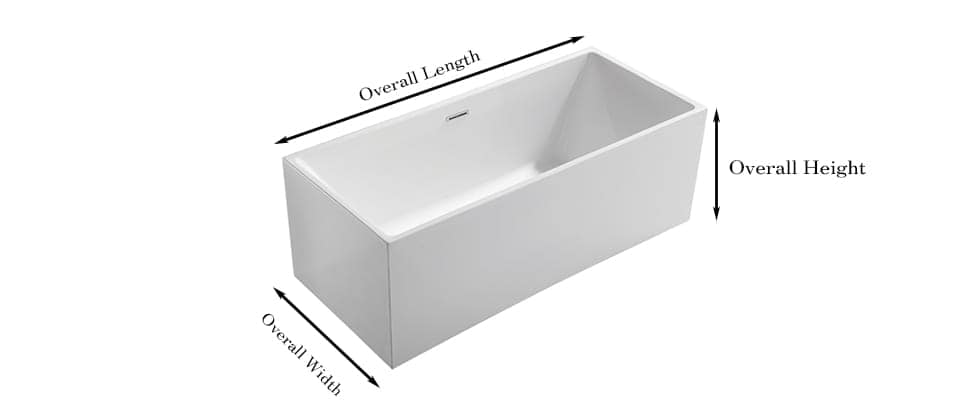
How These Dimensions Impact Your Choice
- Length: Affects how well you can stretch out. Taller users need longer tubs for full-body comfort.
- Width: Impacts comfort, especially for larger users or two-person baths. Wider tubs offer more space and ease.
- Overall Height: Though not soaking depth, it affects how easy it is to get in and out. High tubs can be a challenge for kids, seniors, or those with limited mobility. It also influences the bathroom’s look and feel.
- Installation Space: Beyond the tub size, you need to allow for clearance—3–6 inches for freestanding tubs, at least 6 inches of deck space for drop-ins. Your bathroom’s layout, size, and plumbing may limit what’s actually installable. A tub can look ideal on paper but not fit your space in practice.
Benefits of a Deeper Soak: Why It Matters
- Enhanced Relaxation: Soaking tubs provide a deep, immersive bathing experience, promoting stress relief and mental calmness through prolonged warm water exposure.
- Muscle and Joint Relief: The warm water and buoyancy help soothe sore muscles, reduce joint pain, and alleviate tension, ideal for post-workout recovery or arthritis relief.
- Improved Circulation: Soaking in warm water boosts blood flow, which can aid in reducing inflammation and promoting overall cardiovascular health.
- Better Sleep Quality: A warm soak before bed can relax the body and mind, helping to improve sleep onset and quality.
- Luxurious Aesthetic: Soaking tubs add a spa-like elegance to bathrooms, enhancing the visual appeal and potentially increasing home value.
- Customizable Experience: Many soaking tubs support additions like bath salts, essential oils, or jets, allowing for personalized therapeutic sessions.
- Mental Health Benefits: The serene environment fosters mindfulness and a sense of tranquility, offering a private retreat for mental rejuvenation.
- Skin Health: Soaking can hydrate the skin and, when combined with appropriate bath products, may help with conditions like eczema or dryness.

Choosing the Right Soaking Depth for Your Needs
Selecting the ideal soaking depth and tub type requires balancing practical and personal factors. Here’s a quick guide to help you decide:
- Bathroom Size and Layout:
Measure your space precisely, including clearance (3–6 inches for freestanding tubs, 6+ inches deck space for drop-ins). For small bathrooms, consider compact or Japanese-style tubs that offer depth with a smaller footprint. Larger bathrooms can accommodate deep drop-in tubs. - Bather Height and Body Type:
Taller people need deeper (20+ inches) and longer tubs (66–72+ inches) for full immersion and comfort. Wider tubs (36–40+ inches) improve comfort, especially for two bathers. - Bathing Purpose:
Decide if you want quick rinses (standard tubs, 12–17 inches deep) or long, relaxing soaks (soaking tubs, 20+ inches deep). For therapy, consider tubs with jets or whirlpools. - Accessibility and Household Needs:
Walk-in tubs suit those with mobility issues. Very deep tubs can be hard to enter. If combining with a shower, expect shallower depths (~20 inches) for safety. - Plumbing and Structure:
Ensure your water heater can fill a deep tub with enough hot water. Confirm your floor can support the tub’s weight—consult a professional for deep or oversized tubs. - Budget:
Soaking tubs range from $600 to $3,500+, with most spending $2,000–$2,500 plus installation. Premium materials and features increase costs.
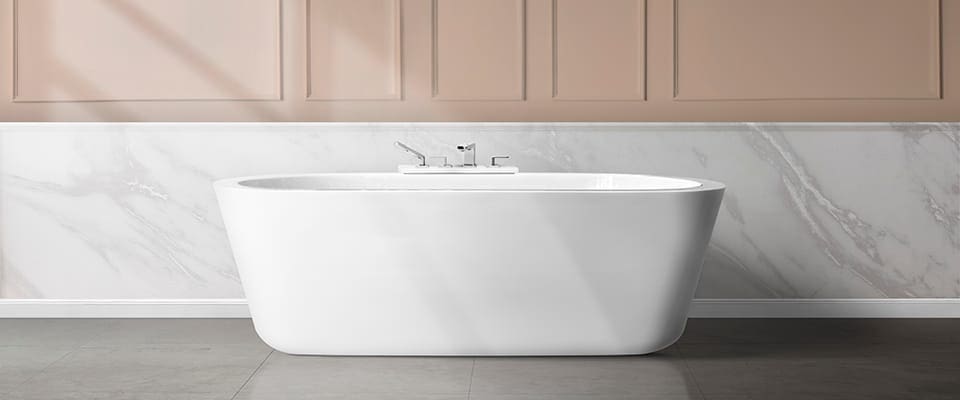
Ready to Buy Your Bathtub? Here’s How to Choose the Best One
Once you’ve determined your ideal soaking depth, you’re ready for the next step! To help you choose the best tub for your home, explore our comprehensive guide:
Finding Your Perfect Soaking Depth: Making the Right Choice
Ultimately, choosing the right bathtub soaking depth comes down to balancing your personal desires for relaxation with the practical realities of your bathroom and home. As I see it, the best approach involves:
- Prioritizing Your Needs: Do you value maximum immersion above all else, or are space and water usage bigger concerns?
- Measuring Accurately: Know your bathroom dimensions and the exact soaking depth you need.
- Considering Your Water Heater: Don’t forget this vital component of a truly satisfying deep soak.
I encourage you to visit showrooms to sit in different tubs and get a feel for their depths. Many online retailers also provide detailed specifications that include soaking depth.
FAQs
About Luxuryhome
Luxuryhome is not just a faucet manufacturer or wholesaler, but more like a partner who can provide you with more added value.
We are united in our determination to produce China-made bath and kitchen fixtures adhering to the highest ethical principles. You have our promise!
More post you may interested in

